Lab #1 Non-infectious Diseases
Chemical Damage
Salt Damage on Harwoods:
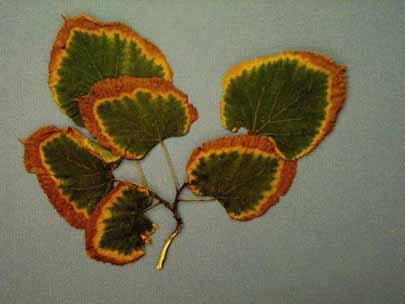
Salt Damage on basswood: Note necrosis and chlorosis at edge of leaves.
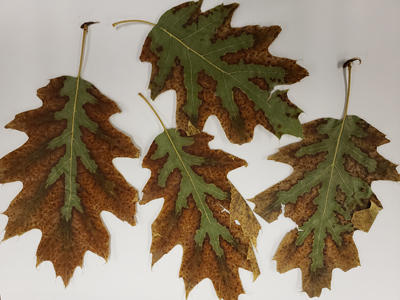
Salt Damage on oak.
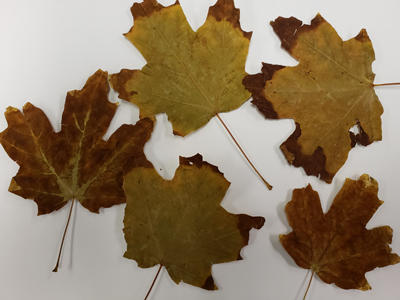
Salt Damage on maple.
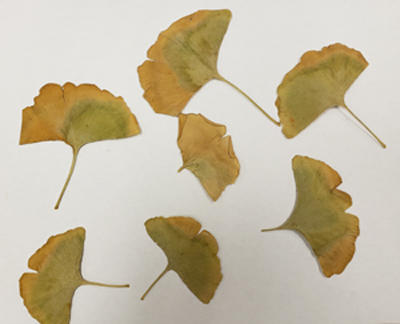
Salt damage on ginkgo
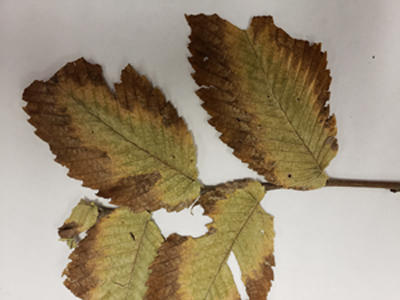
Salt damage on elm
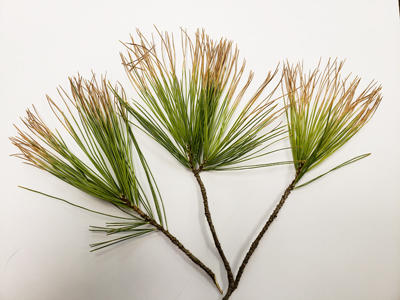
Salt Damage on pine: Tips of needles are affected, first turning chlorotic then necrotic.
___________________________________________
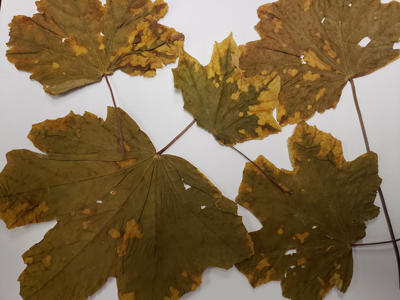
Chemical damage on maple caused by a spray containing oil. Note damage occurs wherever the oil hit the leaves.
_________________________________________________
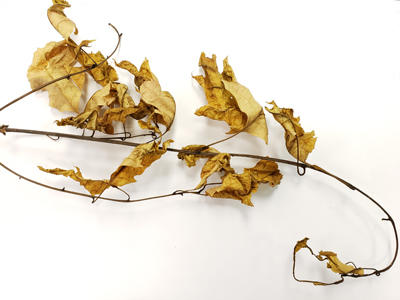
Herbicide Damage - This herbicide caused curling of leaf edges as well as the "Shepard's crook" (branch tip curling or epinasty) and killed the tree.
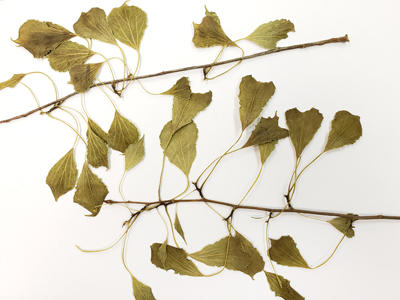
Herbicide Damage on aspen - low concentrations of herbicides can cause distorted growth and odd looking leaves.
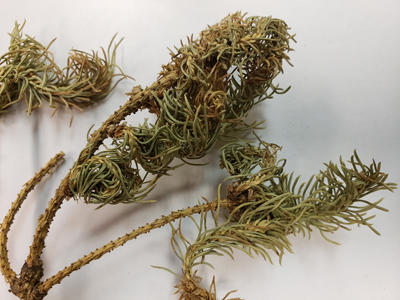
Herbicide damage on spruce causing the growing tips to be distorted.
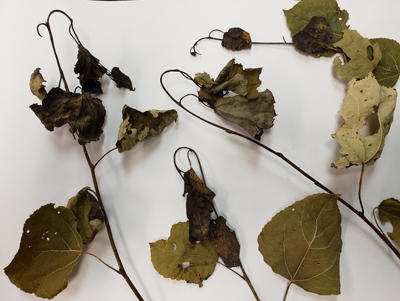
Not herbicide damage - Although these symptoms look like herbicide damage, this is caused by a fungus and it is called aspen twig blight. After infection, the tips turn black and become curled.
An unknown for you to consider - What do you think caused these symptoms?
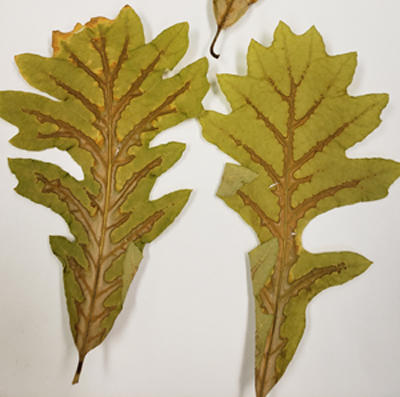
This oak tree had unusual symptoms. What may have caused this damage?